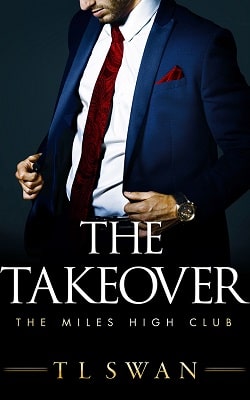"It's worse."
"Why don't we just head for the lifeboats?"
This was crazy, McFerrin thought. No one on the bridge had alerted the engine room crew that the fire had already destroyed half the ship. "All the lifeboats have been destroyed by the fire. The Emerald Dolphin is doomed. Get out while you can. Keep the generators going. We'll need light to abandon the ship and guide any rescue vessels."
No more wasted words came from Chief Engineer Garcia. He instantly gave the order for the engines to shut down. Soon afterward, his crew abandoned the engine room and made their way through the cargo and baggage compartments to the bow.
Garcia was the last to leave. He made certain that the generators were operating smoothly before he ducked into the nearest passageway.
"Have any ships responded to our Mayday call?" McFerrin asked Sheffield.
Sheffield stared blankly. "Mayday?"
"Didn't you give our position and request immediate assistance?"
"Yes, we must send out a call for help. . . ." Sheffield muttered vaguely.
McFerrin immediately read the incoherence in Sheffield's tone and eyes and was horrified. "Oh God, it's probably too late. The flames must have reached the radio room."
He snatched up a phone and called the radio room, but heard only static. Exhausted and in pain from his burns, McFerrin sagged despairingly against the ship's control counter. "More than two thousand people are about to burn to death or die in the water with no hope of a rescue," he murmured in solemn frustration. "And we can do nothing but join them."
3
Twelve miles to the south, a pair of opaline green eyes gazed into the brightening sky to the east before turning and examining the red glow on the northern horizon. Absorbed, the man stepped from the bridge wing into the pilothouse of the NUMA oceanographic survey vessel, Deep Encounter, picked up a pair of strong binoculars that were sitting on the bridge counter and returned. Slowly, deliberately, he focused the glasses and stared into the distance.
He was a tall man, three inches more than six feet, and a lean 185 pounds. His every movement seemed consciously planned. The black hair was wavy, almost shaggy, with a touch of gray beginning to show at the temples. The face was a face that knew the sea above and below. The tanned skin and the craggy features revealed a love of the outdoors. He was obviously someone who spent far more time under sun and sky than under the fluorescent lights of an office.
The early-morning tropical air was warm and humid. He wore blue denim shorts under a colorfully flowered Hawaiian aloha shirt. His narrow feet that stepped straight as a spear were strapped into sandals. It was the uniform of the day for Dirk Pitt when he was on a deep-water research project, especially when he was working within a thousand miles of the equator. As special projects director for the National Underwater and Marine Agency, he spent nine months out of each year at sea. On this expedition, the NUMA scientists were conducting a deep-water geological survey in the Tonga Trench.
After studying the glow for three minutes, he retraced his path into the pilothouse and leaned into the radio room. The radio operator on the graveyard shift looked up sleepily and said automatically, "Latest satellite weather forecast reports heavy squalls headed our way with thirty-mile-an-hour winds and ten-foot seas."
"Perfect for flying a kite," Pitt said, smiling. Then his expression aimed serious. "Have you picked up any distress signals in the last hour?"
The operator shook his head. "I had a short conversation with the radioman on board a British containership around one o'clock. But no distress signal."
"A large ship off to the north looks like it's on fire. See if you can make contact with her."
Pitt turned and touched Leo Delgado, the officer on duty, on the shoulder. "Leo, I'd like you to turn the ship north and proceed at full speed. I believe we have a ship on fire. Wake Captain Burch and ask him to come to the pilothouse."
Though Pitt was head of the project and outranked Burch, the captain still commanded the ship. Kermit Burch came almost immediately, wearing only a pair of polka-dot shorts. "What's this about a ship on fire?" he asked Pitt, suppressing a yawn.
Pitt motioned out on the bridge wing and handed him the binoculars. Burch peered at the horizon, paused, rubbed the lenses on his shorts and peered again. "You're right. She's blazing like a torch. I make her out to be a cruise ship. A big one."
"Odd that she hasn't sent out a Mayday."
"That is curious. Her radio must be disabled."
"I requested Delgado to turn from our course and head toward her at full speed. I hope you don't mind my stepping in your territory. I thought it would save a few minutes."
Burch grinned. "You gave the same order I would have given." Then he stepped over to the ship's phone. "Engine room, roust Marvin out of bed. I want every revolution he can get out of the engines." He paused to listen to the voice on the other e
nd. "Why? Because we're going to a fire. That's why."
After the news went out, the survey ship came alive, as crew and scientists were assigned special duties. The ship's two thirty-five-foot hydrographic survey launches were made ready to drop in the water. Slings were attached to the two telescoping deck cranes used to raise and lower submersibles and survey equipment, so that groups of people could be pulled from the water. Every ladder and rope on the ship was coiled to be thrown over the sides, along with cradles to lift children and the elderly on board.
The ship's doctor, with the assistance of the marine scientists, prepared the hospital and a casualty station in the mess room. The cook and his galley help began setting out bottles of water, pots of coffee and vats of soup. Everyone chipped in to provide clothing for those who might be rescued without any. Officers instructed selected crewmen to channel survivors onto different parts of the ship, to be cared for as well as act as ballast. With an overall length of 230 feet and a 50-foot beam, the Deep Encounter was not designed to support, much less float, with two thousand passengers. If the horde that was expected to come on board was not placed strategically to balance the ship, it could roll over and capsize.
The Deep Encounter was only rated at a top speed of sixteen knots, but Chief Engineer Marvin House pulled every ounce of power from his two big 3,000-horsepower diesel electric propulsion engines. Seventeen knots became eighteen, then nineteen, until the bow was thrusting through the sea at twenty knots. Her bow almost leaped clear of the water as she burst through the crest of the rolling waves. No one knew the Deep Encounter could drive so hard.















